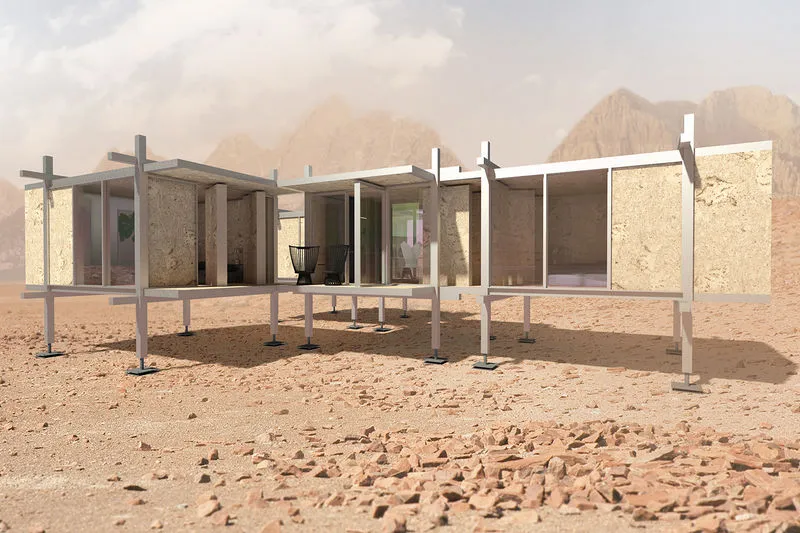by France Architecture News
Jean Nouvel is one of the designers who develops modular mobile homes for Revolution Precrafted-Nouvel has unveiled his modular shelter, produced as part of a limited edition series for Revolution Precrafted. Named Simple, this house is designed and packaged off-site, delivered in a standard shipping container and easily assembled on-site for the fair.
The architects first presented his design in front of the Louvre in Paris on October 18 – 28. The, Nouvel’s collectible home was showcased during the Foire internationale d’art contemporain (FIAC) in Paris.

The structure is comprised of lightweight aluminum exterior panels, a layer of thermally-efficient insulating foam and wooden interior lining. The design is customizable in size and layout, allowing for end-users to define the space to their liking with sliding interior windows and partitions. Collectors can also choose from a variety of interior finishes.
”Housing is the purpose of architecture. What we propose here is the most immediate way to inhabit a space, within a short timeframe, in places that are not designed for residential use today and that become so, spontaneously. All of the essential notions relating to housing must be condensed into a single object that can be built very quickly and inhabited by one, two, three or four people within the same volume,” said Jean Nouvel.

Revolution presents art and design enthusiasts with a new way of collecting and experiencing art. These designer pavilions, envisioned by leading architects, artists and design luminaries, are collectible structures that aim to democratize high-design by making them accessible to a broader audience.
An exclusive curation of pre-crafted pavilions is made available thru a sophisticated e-commerce platform, making it possible for anyone to own editioned pieces in a click of a button.

Revolution Precrafted Pavilions are collectible structures with a wide array of functions that will complement a home or an existing space. They are unique space additions that can be anything from a living room, pool, reading area, or a multitude of other functions that are meant to inspire, excite, motivate, and contribute to one’s health and wellbeing.
The project unites over 30 of the world’s preeminent architects, artists and designers to create an exclusive series of prefab, liveable spaces including Zaha Hadid&Patrik Schumacher, Kengo Kuma, Massimiliano&Doriana Fuksas, Ben Van Berkel, Sou Fujimoto, Fernando Romero and many more.

Related Links: About Robbie Antonio , Contact











































































